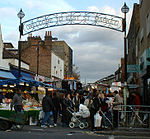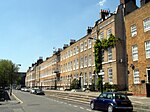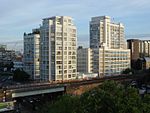University Academy of Engineering South Bank
2014 establishments in EnglandAcademies in the London Borough of SouthwarkEducational institutions established in 2014London South Bank UniversityLondon school stubs ... and 2 more
Secondary schools in the London Borough of SouthwarkUse British English from November 2020
South Bank University Academy is a coeducational secondary school and sixth form located in the Walworth area of the London Borough of Southwark, England.It opened as an academy in 2014 and is part of South Bank Academies (sponsored by London South Bank University). A 2017 Ofsted report rated the school as "Good".
Excerpt from the Wikipedia article University Academy of Engineering South Bank (License: CC BY-SA 3.0, Authors).University Academy of Engineering South Bank
Trafalgar Street, London Walworth (London Borough of Southwark)
Geographical coordinates (GPS) Address Phone number Website Nearby Places Show on map
Geographical coordinates (GPS)
| Latitude | Longitude |
|---|---|
| N 51.4885 ° | E -0.0886 ° |
Address
University Academy of Engineering South Bank
Trafalgar Street
SE17 2TP London, Walworth (London Borough of Southwark)
England, United Kingdom
Open on Google Maps








